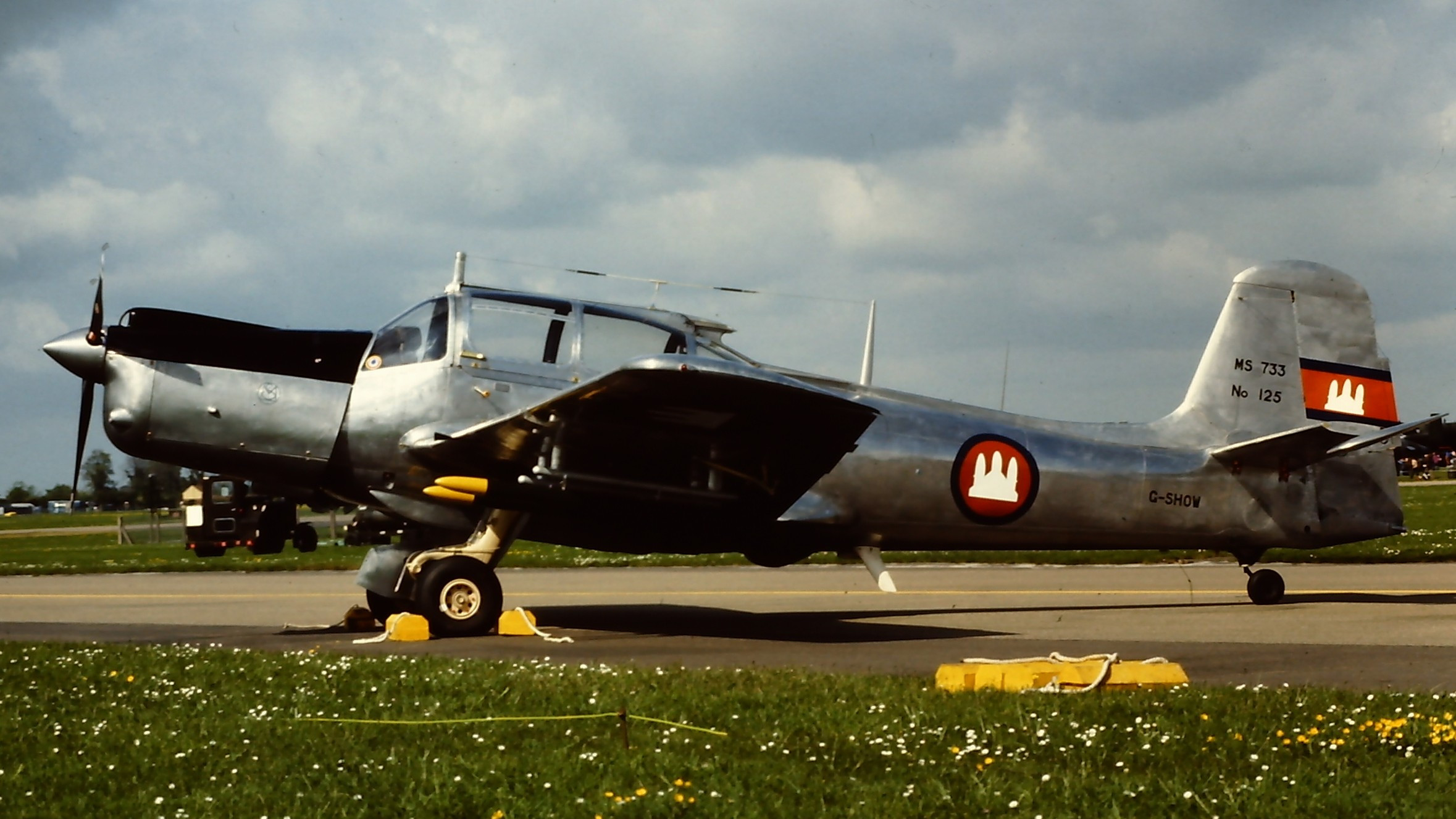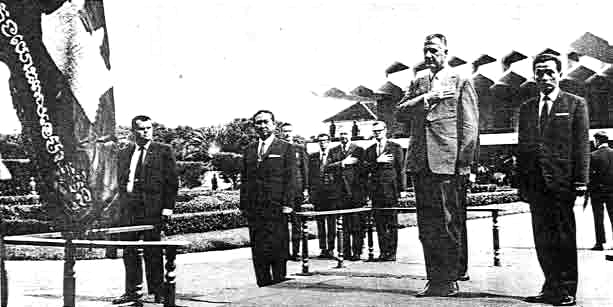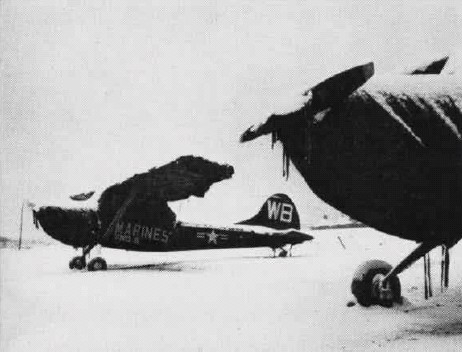|
Khmer Air Force
The Khmer Air Force (french: Armée de l'air khmère; AAK), commonly known by its americanized acronym KAF (or KhAF) was the air force component of the Khmer National Armed Forces (FANK), the official military of the Khmer Republic during the Cambodian Civil War between 1970 and 1975. History Although an air wing for the fledgling Khmer Royal Army (ARK) was first planned in 1952, it wasn't until April 22, 1954, however that the Royal Khmer Aviation (; AVRK) was officially commissioned by Royal decree. Commanded by Prince Norodom Sihanouk's personal physician, Colonel Dr. Ngo Hou, and known sarcastically as the "Royal Flying Club",Conboy and Bowra, ''The War in Cambodia 1970-75'' (1989), p. 19. the AVRK initially operated a small fleet of four Morane-Saulnier MS 500 Criquet liaison aircraft, two Cessna 180 Skywagon light utility aircraft, one Cessna 170 light personal aircraft, and one Douglas DC-3 modified for VIP transport. At this stage, the AVRK was not yet an independent se ... [...More Info...] [...Related Items...] OR: [Wikipedia] [Google] [Baidu] |
Khmer Republic
The Khmer Republic ( km, សាធារណរដ្ឋខ្មែរ, ; french: République khmère) was a pro-United States military-led republican government of Cambodia that was formally declared on 9 October 1970. The Khmer Republic was politically headed by Prime Minister Lon Nol and Prince Sisowath Sirik Matak who took power in the 18 March 1970 coup against Prince Norodom Sihanouk. The main causes of the coup were Norodom Sihanouk's toleration of the North Vietnamese activity within Cambodia's borders, allowing heavily armed Vietnamese communist outfits ''de facto'' control over vast areas of eastern Cambodia. Another important factor was the dire state of the Cambodian economy, an indirect result of Sihanouk's policies of pursuing neutrality. With the removal of Sihanouk, the existing Kingdom of Cambodia became a republic, officially removing Sisowath Kossamak. The character of the new regime was far-right and militaristic; most significantly, it ended Sihanouk's ... [...More Info...] [...Related Items...] OR: [Wikipedia] [Google] [Baidu] |
Fletcher FD-25
The Fletcher FD-25 Defender was a light ground-attack aircraft developed in the United States in the early 1950s. Design and development Designed by John Thorp, the Defender was a conventional low-wing cantilever monoplane with fixed tailwheel undercarriage. Provision was made for two machine guns in the wings, plus disposable stores carried on underwing pylons. Construction throughout was all-metal, and the pilot sat under a wide perspex canopy. Operational history Three prototypes were built, two single-seaters and a two-seater, but no orders were placed by the US military. In Japan, however, Toyo acquired the rights to the design, and built around a dozen aircraft, selling seven (five single-seater attack versions and two two-seat trainers) to Cambodia,Grandolini 1988, p. 39. and four to Vietnam. One example (FD-25B JA3051) served with the Royal Thai Police. Survivors One example (FD-25B N240D) remains in an airworthy condition today and appeared at the EAA AirVenture Oshkosh ... [...More Info...] [...Related Items...] OR: [Wikipedia] [Google] [Baidu] |
MiG-15
The Mikoyan-Gurevich MiG-15 (russian: Микоя́н и Гуре́вич МиГ-15; USAF/DoD designation: Type 14; NATO reporting name: Fagot) is a jet fighter aircraft developed by Mikoyan-Gurevich for the Soviet Union. The MiG-15 was one of the first successful jet fighters to incorporate swept wings to achieve high transonic speeds. In aerial combat during the Korean War, it outclassed straight-winged jet day fighters, which were largely relegated to ground-attack roles. In response to the MiG-15’s appearance and in order to counter it, the United States Air Force rushed the North American F-86 Sabre to Korea.Thompson, Warren"Sabre: The F-86 in Korea."''Flight Journal'', December 2002. Retrieved: 30 June 2011. When refined into the more advanced MiG-17, the basic design would again surprise the West when it proved effective against supersonic fighters such as the Republic F-105 Thunderchief and McDonnell Douglas F-4 Phantom II in the Vietnam War of the 1960s. The MiG-15 ... [...More Info...] [...Related Items...] OR: [Wikipedia] [Google] [Baidu] |
Yakovlev Yak-18
The Yakovlev Yak-18 (russian: Яковлев Як-18; NATO reporting name Max) is a tandem two-seat military primary trainer aircraft manufactured in the Soviet Union. Originally powered by one 119 kW (160 hp) Shvetsov M-11FR-1 radial piston engine, it entered service in 1946. It was also produced in China as the Nanchang CJ-5. Design and development A member of the second generation of Russian aircraft designers, and best known for fighter designs, Alexander Sergeyevich Yakovlev always retained a light aircraft design section. In May 1945, Yakovlev initiated design of the Yak-18 two-seat primary trainer. He designed it to replace the earlier Yakovlev UT-2 and Yakovlev Yak-5 in service with the Soviet Air Forces and DOSAAF (Voluntary Society for Collaboration with the Army, Air Force and Navy, which sponsored aero clubs throughout the USSR). In 1944, an advanced version of the UT-2 had been built with many of the features of the new Yak-18. The new aircraft flew a yea ... [...More Info...] [...Related Items...] OR: [Wikipedia] [Google] [Baidu] |
Nanchang CJ-6
The Nanchang CJ-6 () is a Chinese basic trainer aircraft designed and built by the Nanchang Aircraft Factory (now Hongdu Aviation) for use by the People's Liberation Army Air Force (PLAAF). Development The CJ-6 (Chu Jiao 初教 = Chuji Jiaolianji 初级教练机 = basic trainer aircraft) is an all-original Chinese design that is commonly mistaken for a Yak-18A. Its predecessor, the Nanchang CJ-5, was a licence-built version of the Yak-18. However, advancements in pilot training brought a need for a new aircraft with improved performance and a tricycle landing gear. When the Soviet Union developed the Yak-18A, PLAAF engineers decided that its performance and design would not suit China's needs. The aircraft was designed in 1958 by the Nanchang Aircraft Factory (now Hongdu Aviation). As the Shenyang Aircraft Factory already had experience building the Shenyang JJ-1 begun technical research for the CJ-6, more than 20 Shenyang designers were transferred to Nanchang, including ... [...More Info...] [...Related Items...] OR: [Wikipedia] [Google] [Baidu] |
Morane-Saulnier Alcyon
The Morane-Saulnier Alcyon (en: Kingfisher) is a two or three-seat basic training monoplane designed and built in France by Morane-Saulnier. Design and development Designed as a basic trainer for the French military the prototype MS.730 first flew on 11 August 1949. The prototype was a low-wing cantilever monoplane with a fixed tailwheel landing gear and powered by a Mathis 8G.20 inverted V8 engine. The engine was replaced with a German war-surplus Argus As 10 and the prototype flew again in November 1949 as the MS.731. Two further prototypes were built and flown in 1951 designated ''MS.732'', they were each powered by a Potez 6D 02 engine and the original fixed landing gear of the prototype was replaced with retractable main wheels. Operational history The production version that followed was designated the MS.733, with five pre-production aircraft and 200 production aircraft. The aircraft were delivered to the French Navy (40), the French Air Force (145) and the Cambodian A ... [...More Info...] [...Related Items...] OR: [Wikipedia] [Google] [Baidu] |
T-41 Mescalero
The Cessna T-41 Mescalero is a military version of the popular Cessna 172, operated by the United States Air Force and Army, as well as the armed forces of various other countries as a pilot-training aircraft. Design and development In 1964, the US Air Force (USAF) decided to use the off-the-shelf Cessna 172F as a lead-in aircraft for student pilots rather than starting them out in the T-37 jet aircraft. The USAF ordered 237 T-41As from Cessna. The first USAF class (67-A) of students began training on the T-41 from the civilian airport in Big Spring, Texas, in August 1965. The T-41B was the US Army version, with a Continental IO-360 engine and constant-speed propeller in place of the Continental O-300 and 7654 fixed-pitch propeller used in the 172 and the T-41A.Taylor, John: ''Jane's Pocket Book of Military Transport and Training Aircraft'', page 67. Macmillan Publishing Inc., 1974. Library of Congress 73-15288Krivinyi, Nikolaus: ''World Military Aviation'', page 148. Arco ... [...More Info...] [...Related Items...] OR: [Wikipedia] [Google] [Baidu] |
Cessna 185 Skywagon
The Cessna 185 Skywagon is a six-seat, single-engined, general aviation light aircraft manufactured by Cessna. It first flew as a prototype in July 1960, with the first production model completed in March 1961. The Cessna 185 is a high-winged aircraft with non-retractable conventional landing gear and a tailwheel. Over 4,400 were built with production ceasing in 1985. When Cessna re-introduced some of its most popular models in the 1990s, the tailwheel equipped Cessna 180 and 185 were not put back into production. Design and development The aircraft is basically a Cessna 180 with a strengthened fuselage. The main difference between the two aircraft is the larger vertical fin on the 185 and the 300 hp (224 kW) Continental IO-520-D engine as opposed to the 230 hp (172 kW) Continental O-470-S fitted to the Cessna 180. The exception was that a Continental Motors IO-470-F engine of 260 hp (194 kW) was initially fitted until midway through the 196 ... [...More Info...] [...Related Items...] OR: [Wikipedia] [Google] [Baidu] |
De Havilland Canada DHC-2 Beaver
The de Havilland Canada DHC-2 Beaver is a single-engined high-wing propeller-driven short takeoff and landing (STOL) aircraft developed and manufactured by de Havilland Canada. It has been primarily operated as a bush plane and has been used for a wide variety of utility roles, such as cargo and passenger hauling, aerial application (crop dusting and aerial topdressing), and civil aviation duties. Shortly after the end of the Second World War, de Havilland Canada decided to orient itself towards civilian operators. Based on feedback from pilots, the company decided that the envisioned aircraft should have excellent STOL performance, all-metal construction, and accommodate many features sought by the operators of bush planes. On 16 August 1947, the maiden flight of the aircraft, which had received the designation ''DHC-2 Beaver'', took place. In April 1948, the first production aircraft was delivered to the Ontario Department of Lands and Forests. A Royal New Zealand Air Forc ... [...More Info...] [...Related Items...] OR: [Wikipedia] [Google] [Baidu] |
O-1 Bird Dog
The Cessna L-19/O-1 Bird Dog is a liaison and observation aircraft. It was the first all-metal fixed-wing aircraft ordered for and by the United States Army following the Army Air Forces' separation from it in 1947. The Bird Dog had a lengthy career in the U.S. military, as well as in other countries. Design and development The U.S. Army was searching for an aircraft that could adjust artillery fire, as well as perform liaison duties, and preferably be constructed of all metal, as the fabric-covered liaison aircraft used during World War II (primarily Stinson and Piper products) had short service lives. After the specification for a two-seat liaison and observation monoplane was issued the Cessna Aircraft Company submitted the Cessna Model 305A, a development of the Cessna 170. The Cessna 305A was a single-engine, lightweight, strut-braced, high-wing monoplane with a tailwheel landing gear. The greatest difference from the Cessna 170 was that the 305A had only two seats, in ... [...More Info...] [...Related Items...] OR: [Wikipedia] [Google] [Baidu] |
Fieseler Fi 156
The Fieseler Fi 156 ''Storch'' (, " stork") was a German liaison aircraft built by Fieseler before and during World War II. Production continued in other countries into the 1950s for the private market. It was notable for its excellent short field (STOL) performance and low stalling speed of 50 km/h (31 mph). French-built later variants often appear at air shows. Compared to most other liaison aircraft of the period, the ''Storch'' was quite large and heavy, with its wingspan exceeding 14 meters (nearly 47 feet) and its weight slightly over 1,300 kg (2,900 pounds) when fully loaded. It was significantly heavier, slower, and less agile than Allied liaison aircraft such as the American Piper L-4 or Stinson L-5, or the British Auster. Design and development Conception and production In 1935, the RLM ('' Reichsluftfahrtministerium'', Reich Aviation Ministry) invited several aviation companies to submit design proposals that would compete for the production contract for a new ''L ... [...More Info...] [...Related Items...] OR: [Wikipedia] [Google] [Baidu] |




.png)


.jpg)
.jpg)

